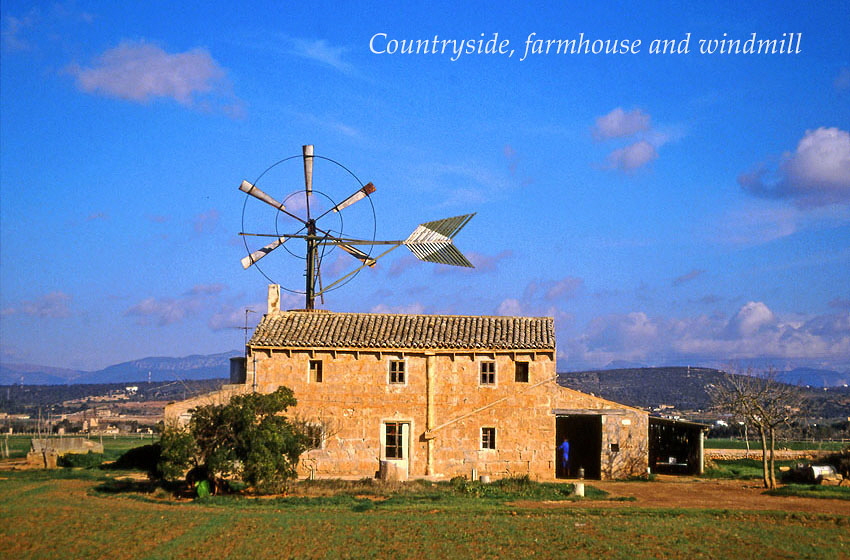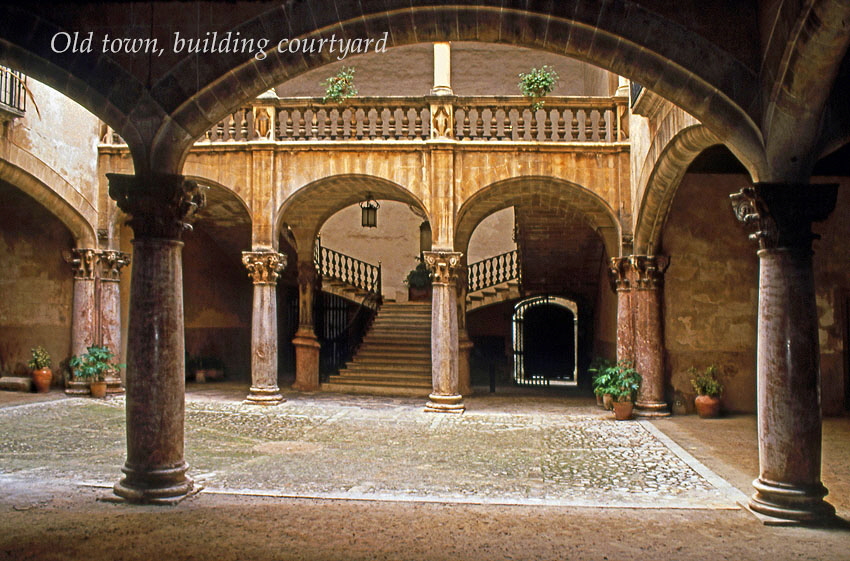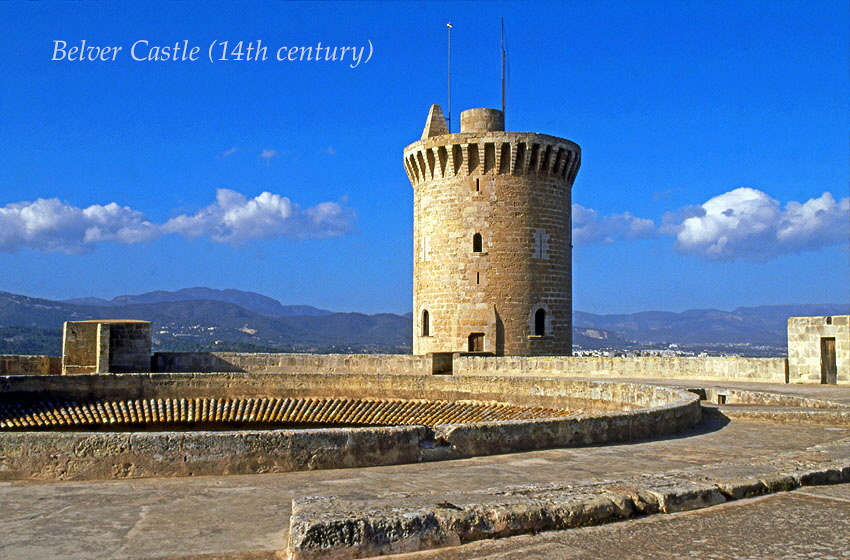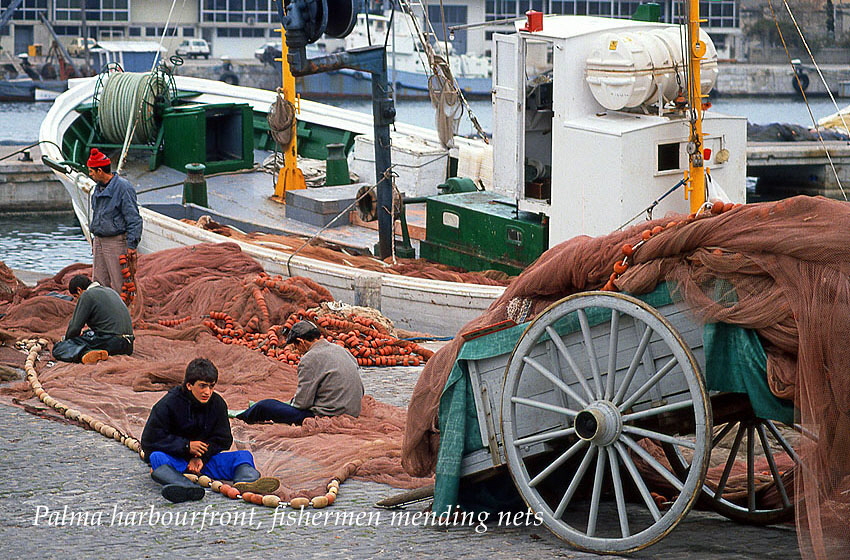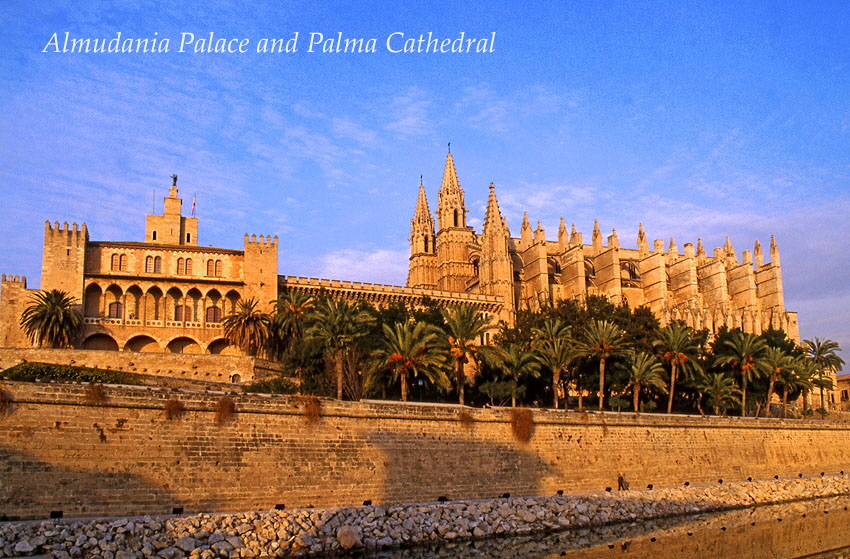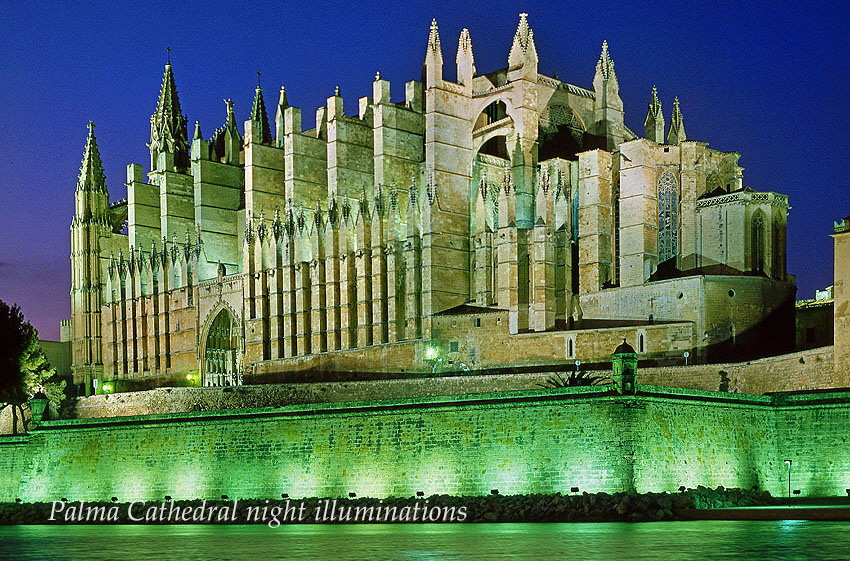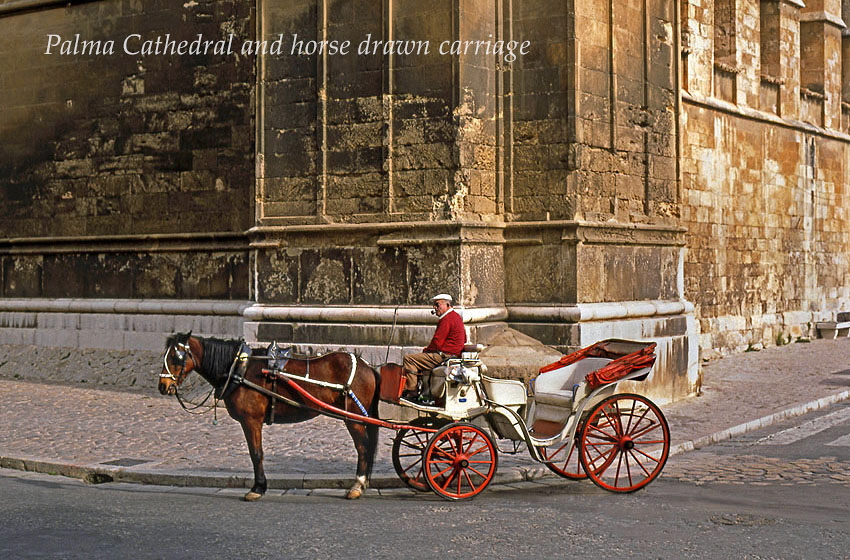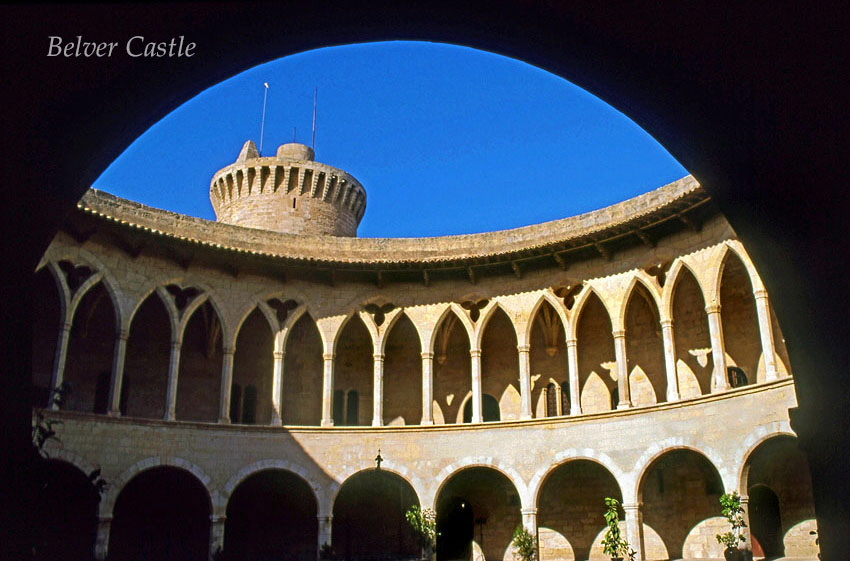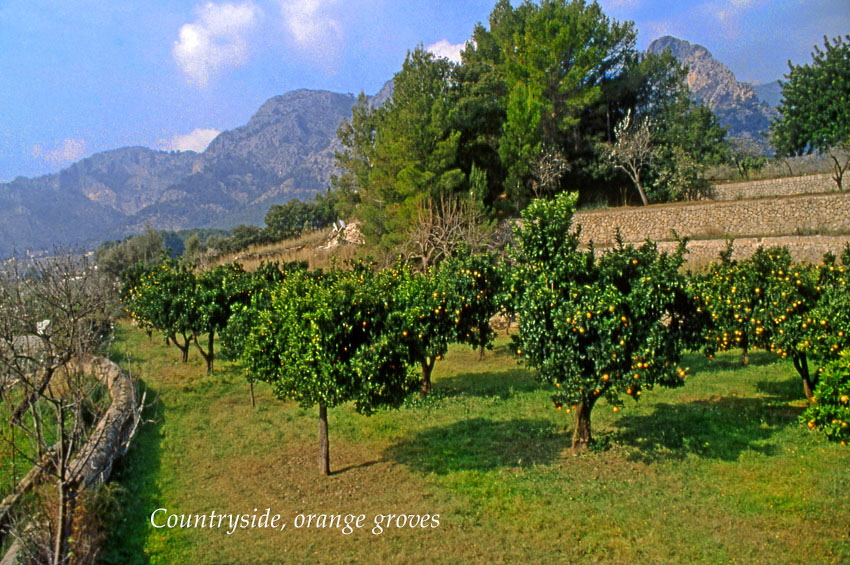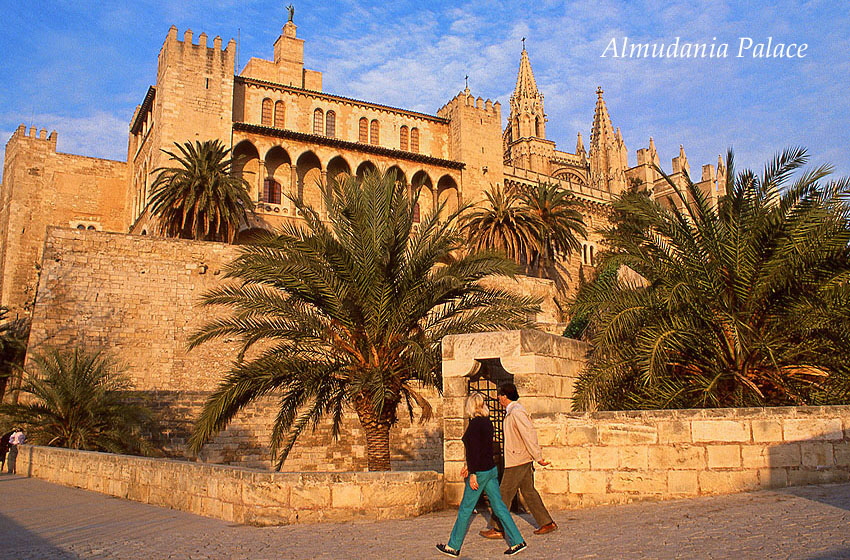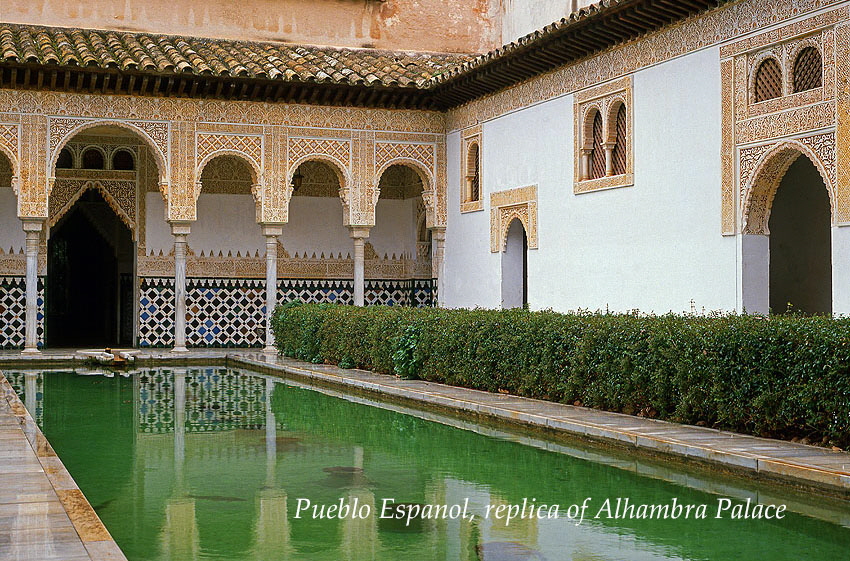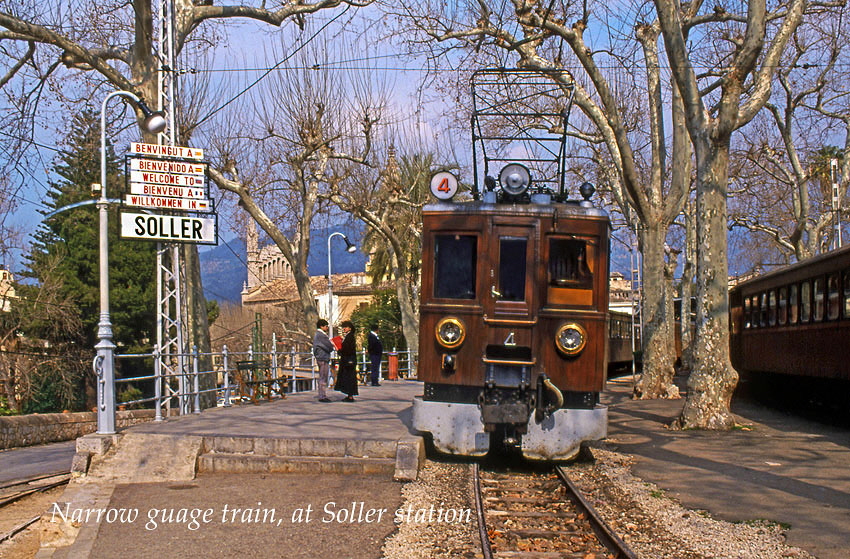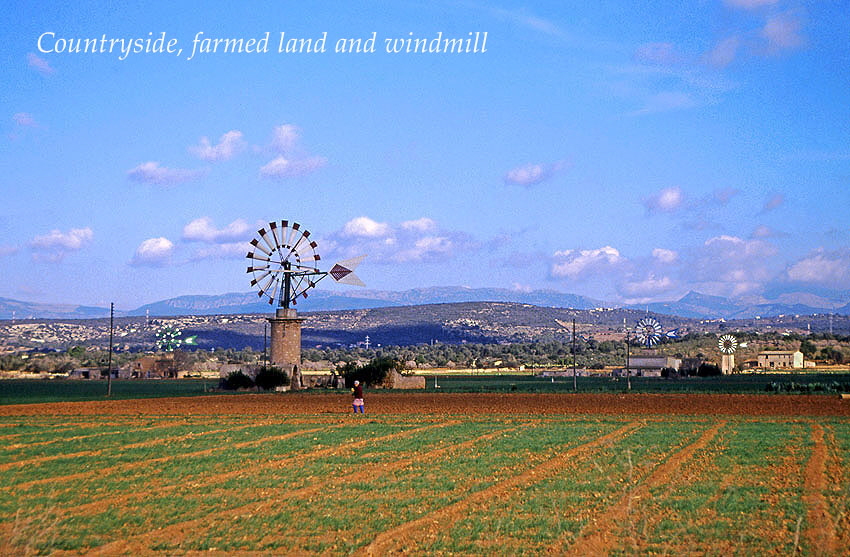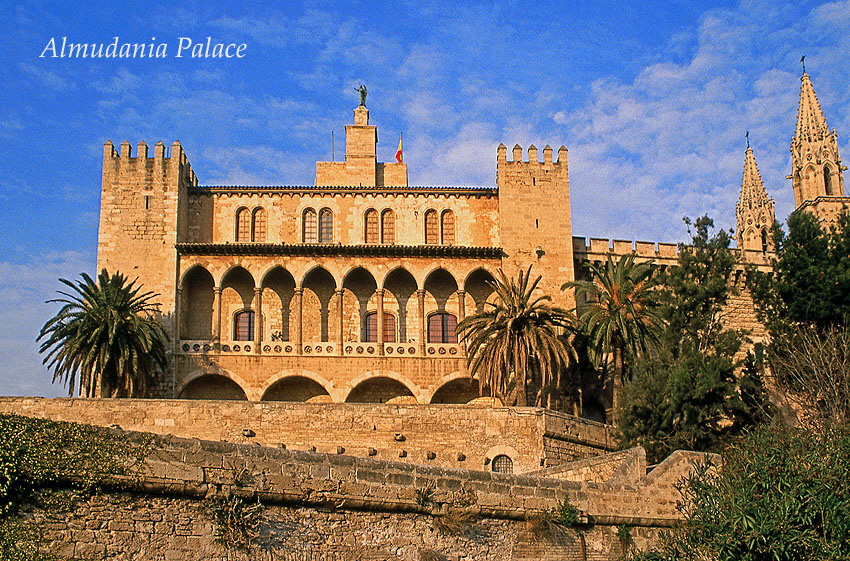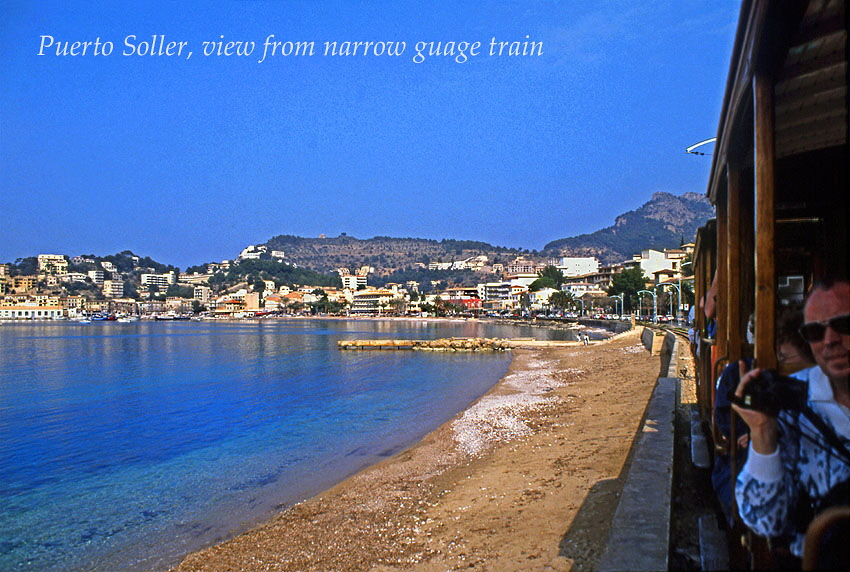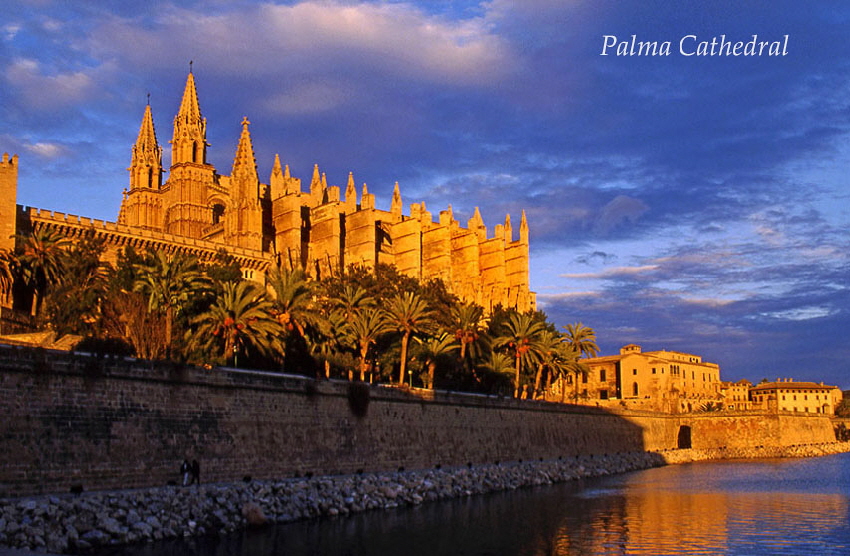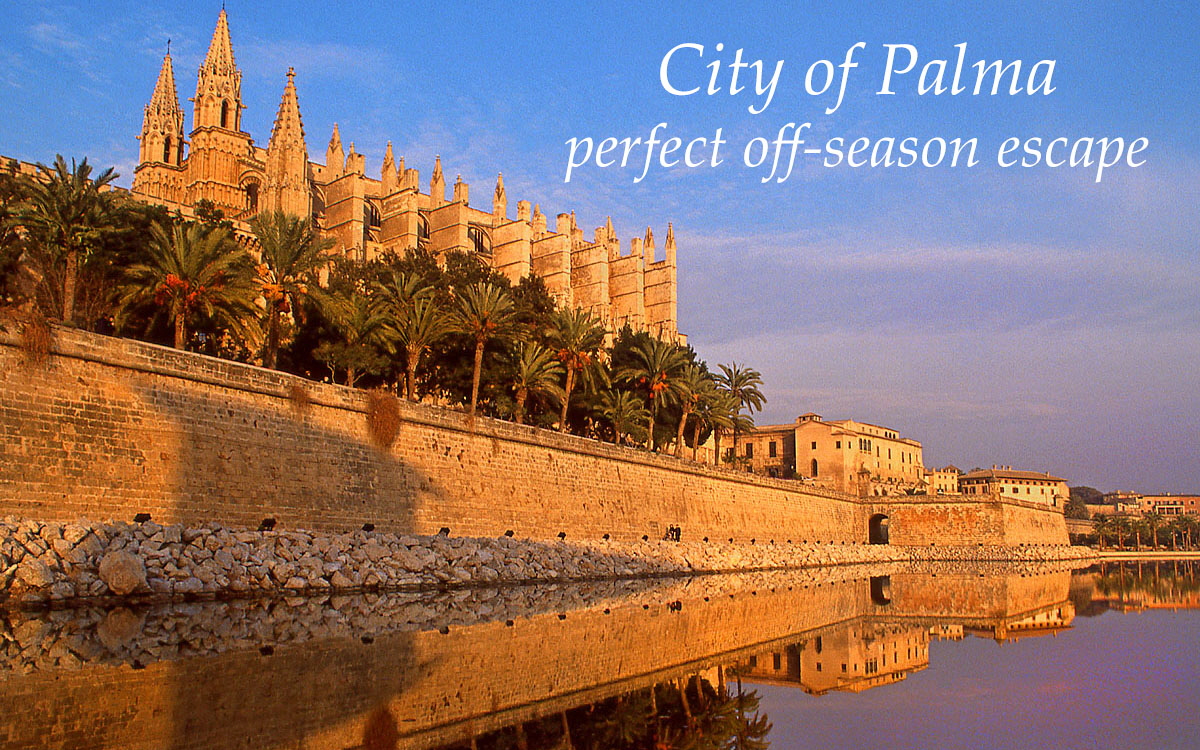
Palma Cathedral
Despite its image as a popular summer sun destination, Majorca is increasingly attracting year-round visitors. Off season is by far the best time to visit Palma, the island’s capital. Prices are lower, crowds are less and there is none of the oppressive heat which can deter sightseeing in the height of summer.
Named after the thousands of palm trees which mark its coastline, Palma is an attractive blend of historic gothic architecture and modern-day activity. It is essentially a modern city but in the old part of town, where the narrow cobbled streets were constructed long before cars were invented, walking is the only sensible way to savour the atmosphere of the place.
Palma coast, and old town street
Palma Cathedral and lake reflection
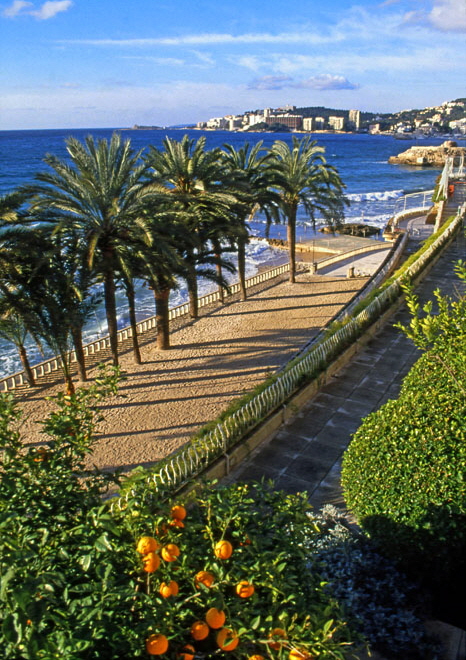
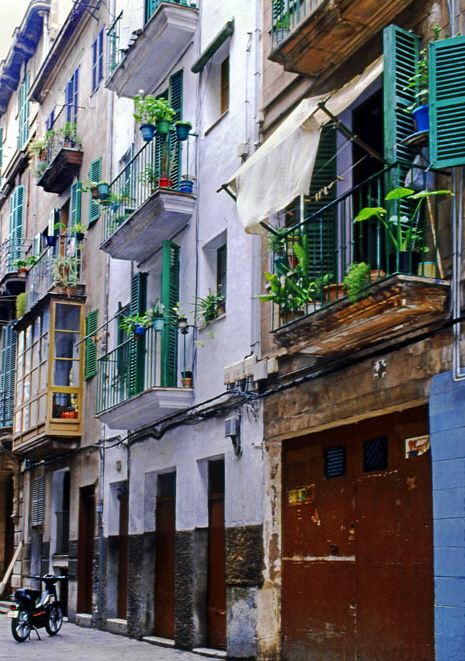
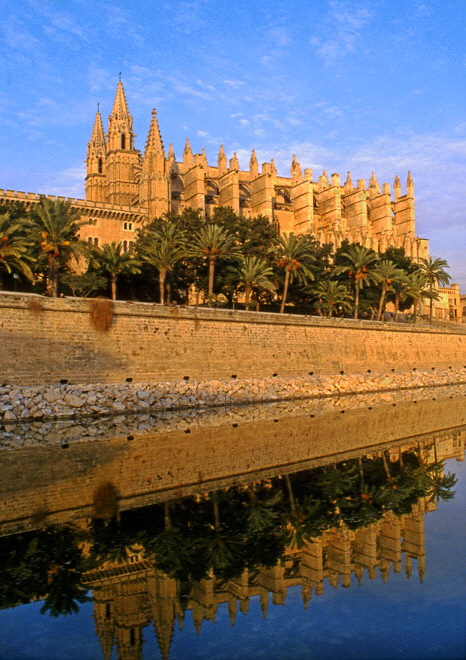
The thirteenth century cathedral (La Seu) is Palma’s most important building and occupies prime position on the sea front. Walking inside this massive structure, with its arches, huge stone pillars and strikingly vivid circular stained-glass windows, it is not difficult to imagine why it took nearly 400 years to complete. At dusk the cathedral is floodlit and its image is mirrored in the artificial lake which surrounds it.
Palma Cathedral, night illuminations
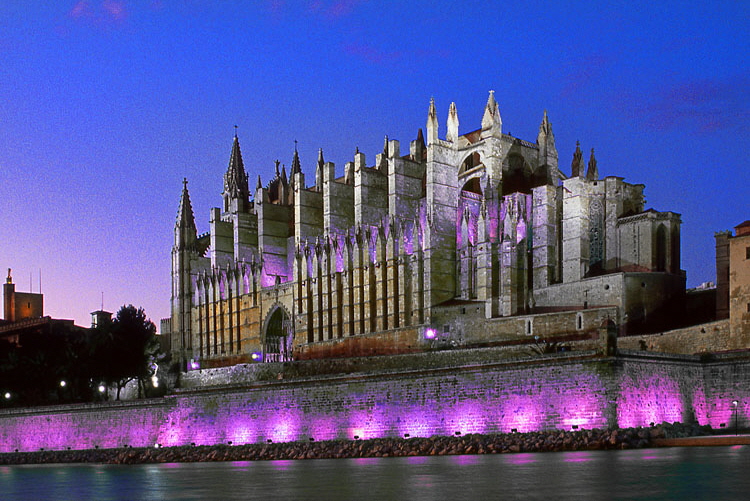
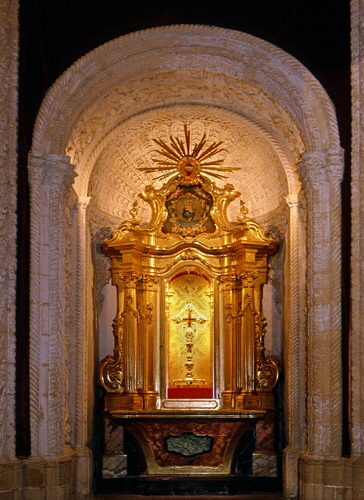
Opposite the cathedral is the Palicio Almudaina. Once the royal residence of Moorish kings, it now serves as the headquarters of the captain general of Majorca. Part of the palace has been turned into a museum and is open to the public.
The Convent of St Francisco is deceptively plain from the outside. Step inside and you will find the thirteen century cloisters and courtyards so full of character that you almost feel you have been transported back into the middle ages.
The Arab baths represent an even earlier era of the island’s history. No one knows exactly how old they are, but they are believed to date from the tenth century.
Palma Cathedral, stained glass window
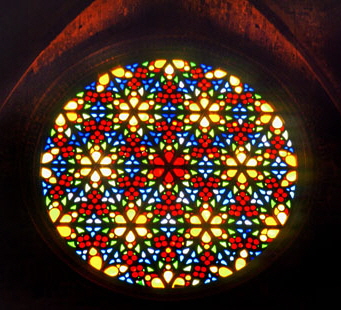
Almudaina Palace

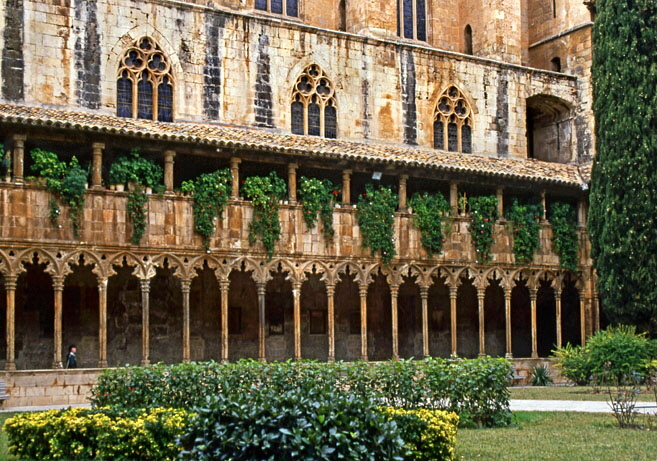

Convent of St Francisco
Large pottery in courtyard
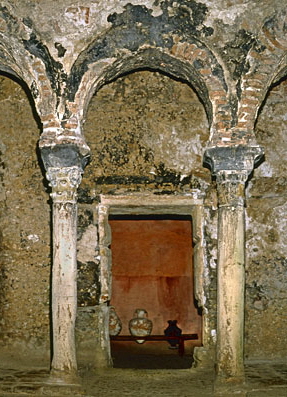
Arab Baths
The area around the Arab Baths is one of the most attractive sectors of the city. The cobbled streets, some consisting entirely of steps, are lined with tall elegant houses, many of which date from the fifteenth century. Doors left ajar offer rare glimpses into the courtyards of once grand mansions, while the streets themselves are so narrow that the overhanging balconies crowded with pot plants almost touch the houses on the opposite side of the road. Most of the verandas also house a bird cage, or two, so that even above the noise of the traffic you can hear the sound of birds singing.
On Sunday mornings, Plaza de Espana is the place to be. It’s Palma’s version of Trafalgar Square, a popular spot with local families who bring their children to feed the hundreds of white pigeons which flock there.
Restaurants and pavement cafes line almost every street and the square in the central area. Most serve paella, Spain’s national dish of rice and seafood. A good paella is always freshly made and takes an experienced chef at least half an hour to prepare. The dish is so filling that a glass or two of local wine is the only necessary accompaniment and, as always the house wine is cheaper than bottled wine and usually of totally acceptable quality.
Arab Baths, ancient pottery

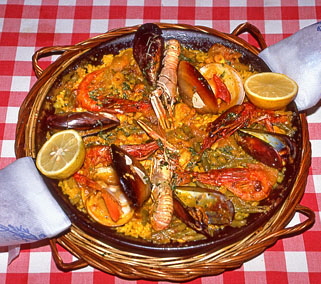
Replica of Alhambra Palace
Pueblo Espanol
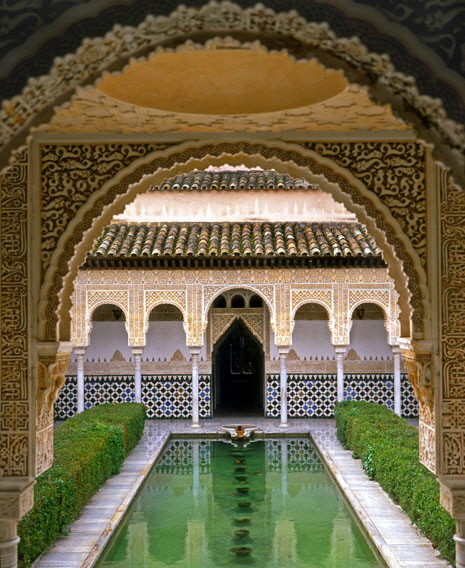
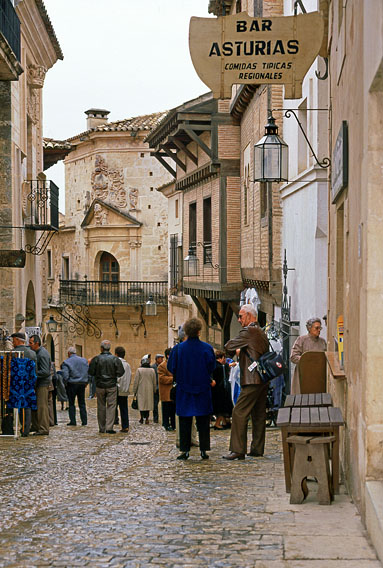
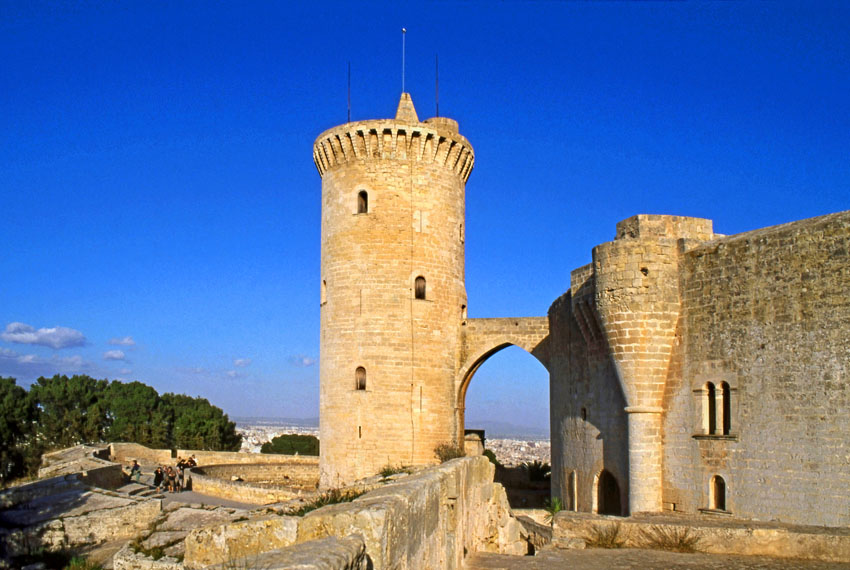
Belver Castle
On the outskirts of the city Pueblo Espanol (Spanish village), an outdoor museum which features scaled down replicas of some of Spain’s best known landmarks from Seville’s Giraldar tower to the Alhambra Palace in Granada. It is an amazing tribute to Spanish architecture.
Perched high on the hillside above the city is Belver Castle, and the top of its fourteenth century ramparts offers one of the finest views over Palma harbour. Despite its age, the castle itself is remarkably well preserved and contains a small museum.
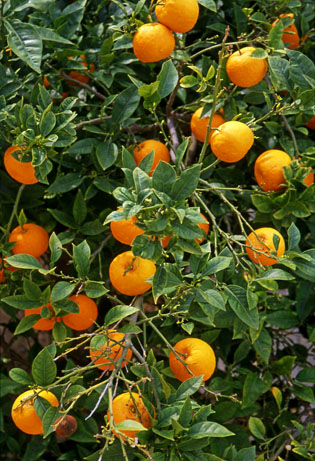
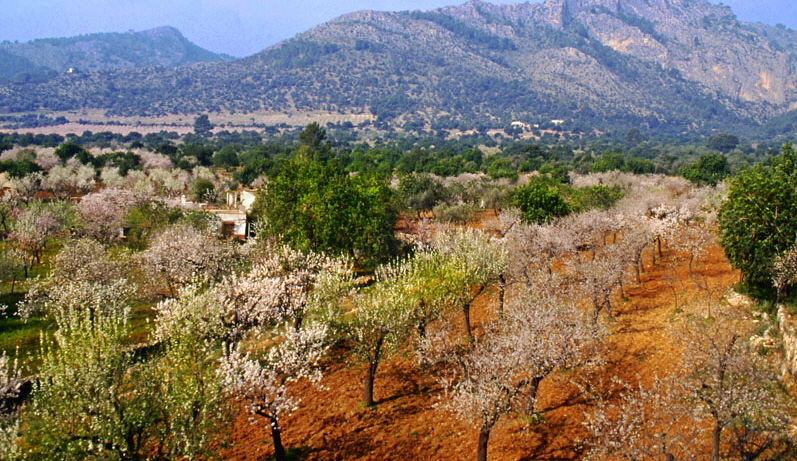
Orange groves
Almond blossom, countryside on route to Soller
The trip by narrow gauge railway from Palma to Soller, in the north side of the island was the highlight of my stay in Majorca. The journey took just under an hour, passing through orchards of almond trees in full blossom and groves of orange and lemon trees laden with fruit.
From Soller station, a turn-of-the-century tram imported from San Francisco runs to the coastal town of Puerto Soller five kilometres away. It’s a ten minute ride through back gardens of the tiny cottages, as it arrives at the pretty town with a circular bay, lined with open air cafes.
Further south is the mountain village of Valldemossa. It was here that the famous lovers Frederic Chopin and George Sand spent winter in 1838, living in part of a converted monastery. The stay inspired him to produce some of his finest music, while she was later to write of their experiences in her book ‘A Winter in Majorca’.
Riding on the narrow gauge train
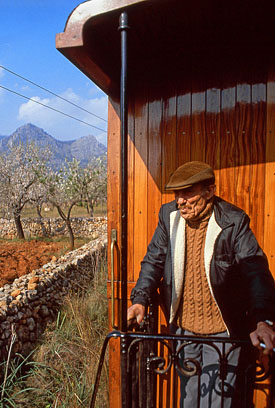
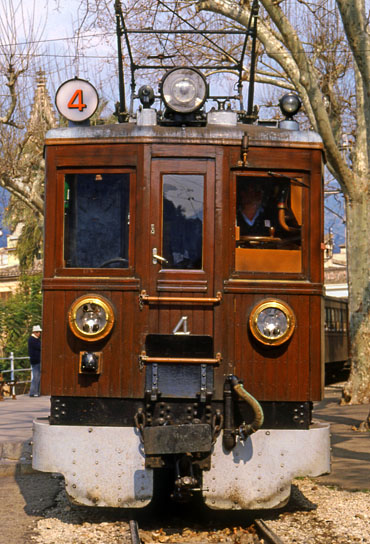
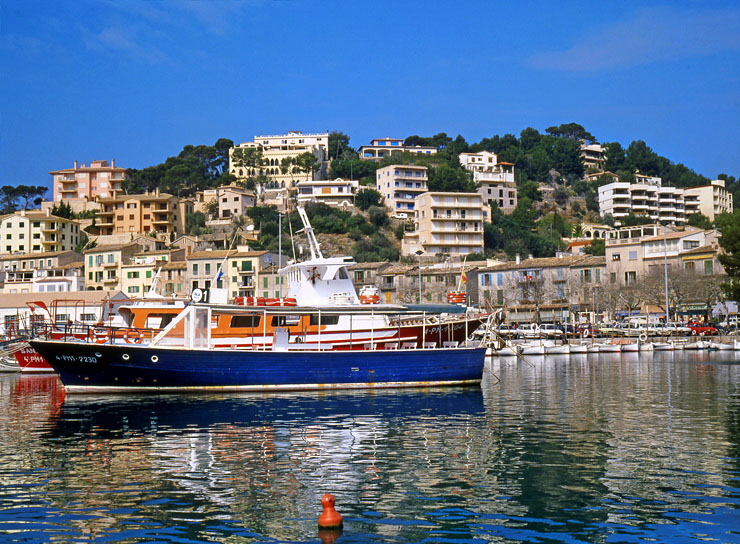
Soller, narrow gauge train, and Puerto Soller town
Inland, the town of Inca is unremarkable but for the fact that it is the centre of the island’s leather industry. On Thursdays however, the whole town is taken over by stall holders and shoppers who converge for the island’s biggest weekly market. The market sells anything and everything from clothes pegs to cabbages. For souvenir hunters, lace and leather good offer the best buys, but only if you’re prepared to bargain.
Inca market
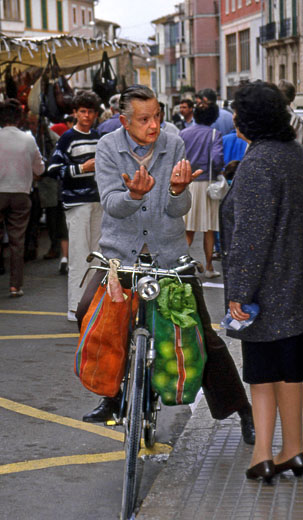
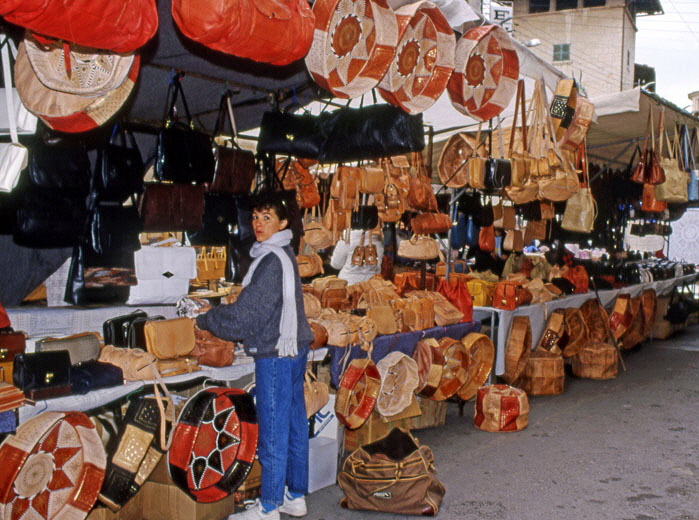
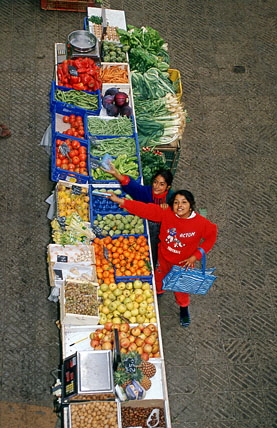
In the south of the island the Caves of Drach are one of Majorca’s biggest attractions. The caves, which were only discovered at the end of the nineteenth century, contain a staggering variety of stalagmite and stalactite formations and also include one of the world’s biggest underground lakes. Lake Martel, is named after the French geologist who discovered it. The nearby town of Porto Cristo has a lovely sandy bay and a beautiful parish church. All are easily accessible from the capital.
Porto Cristo, bay and beach
Porto Cristo, parish church
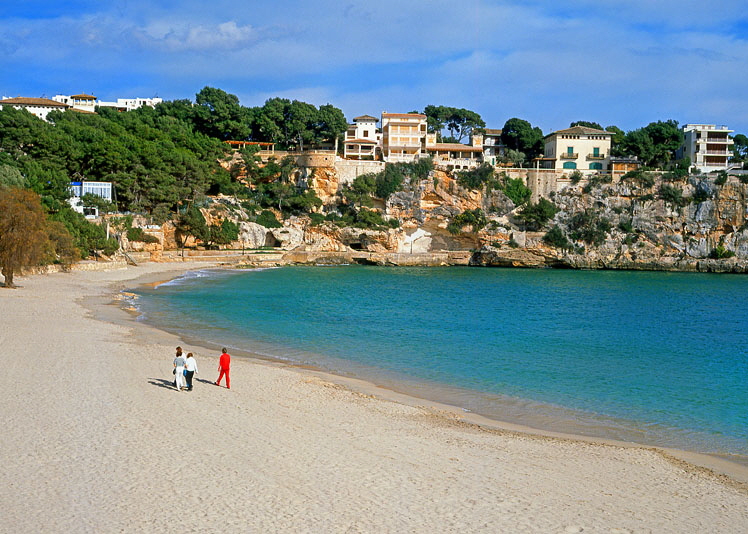
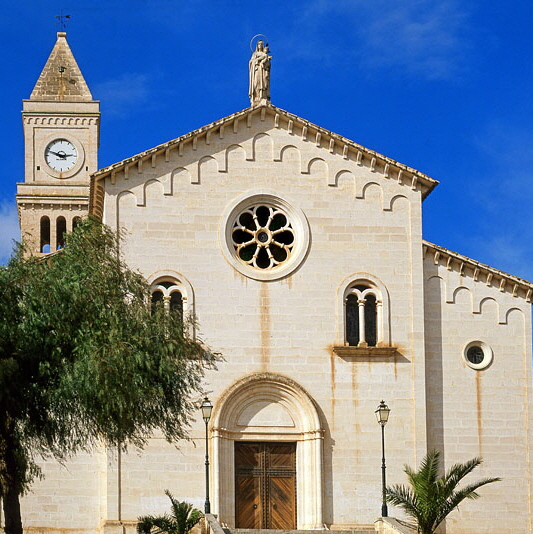
20 images here ©JAYTRAVELPHOTOS
© COPYRIGHT notice. The images on this site are for viewing only.
To purchase any, for personal or commercial use, please contact us at jaytravelphotos@aol.com
